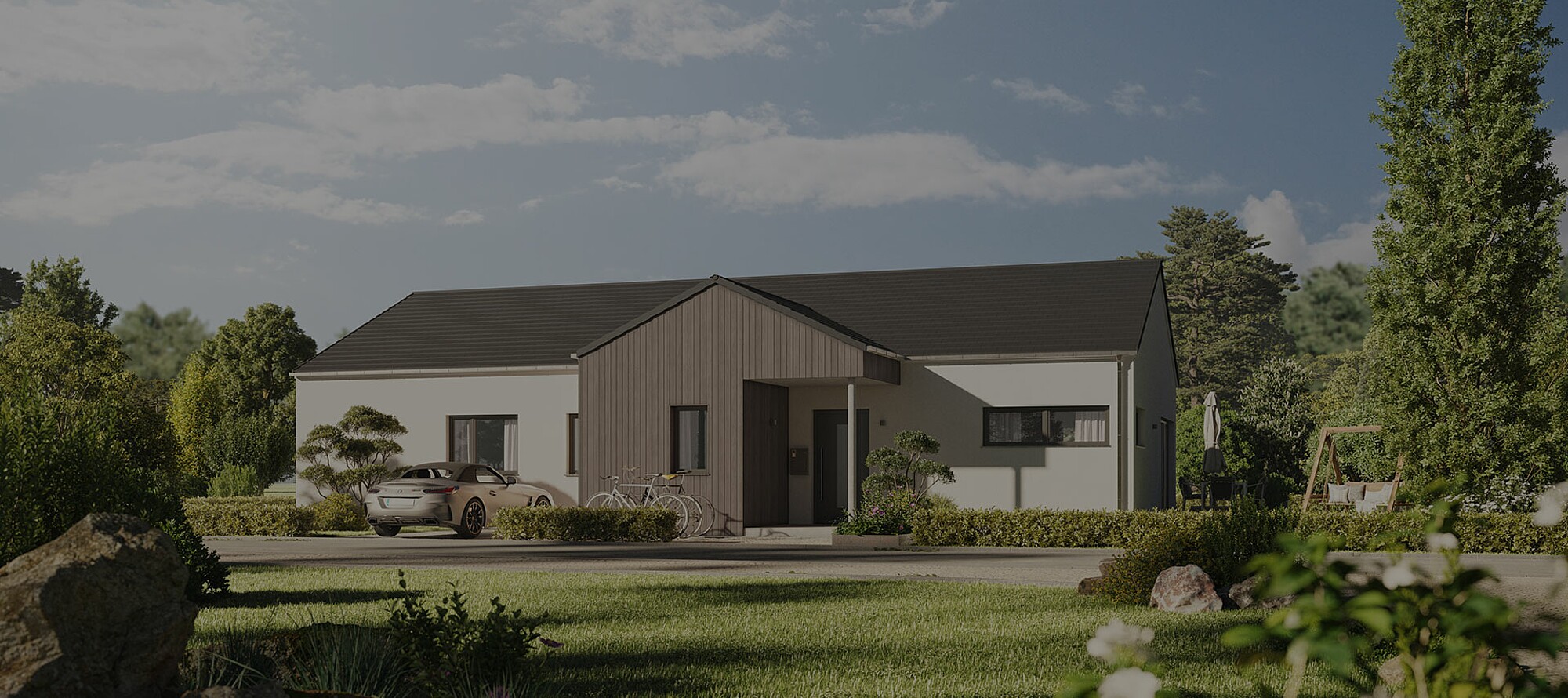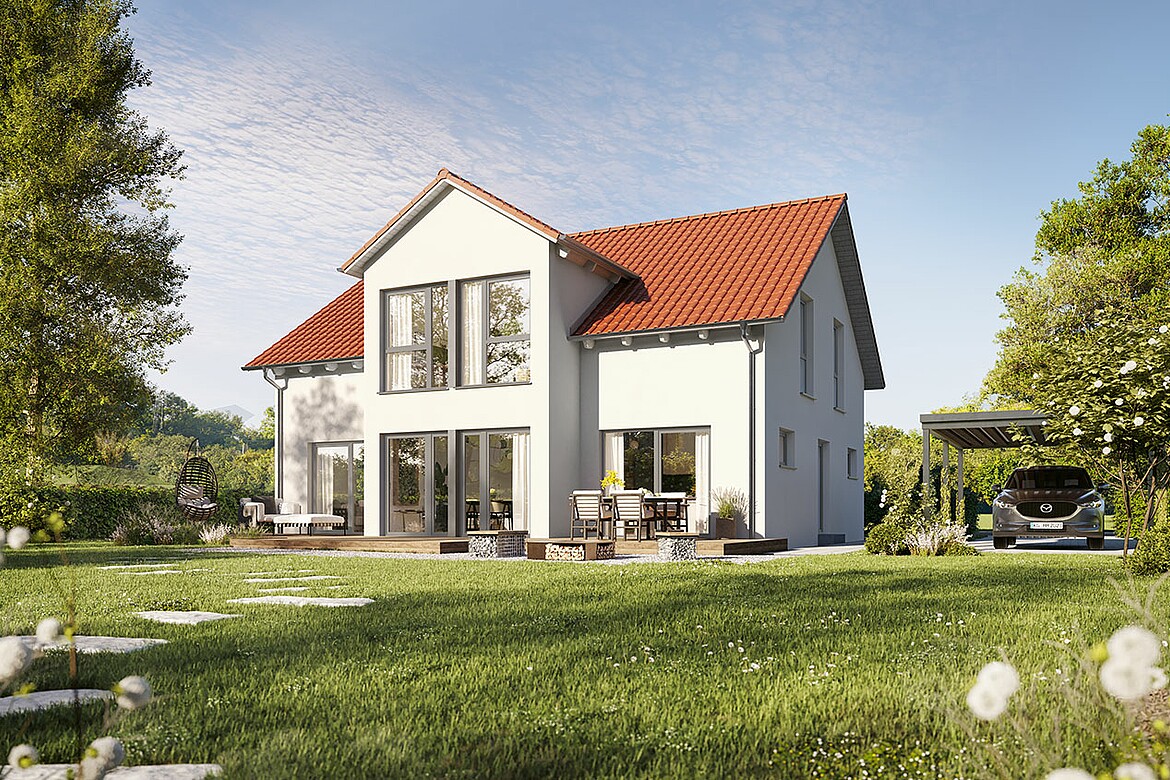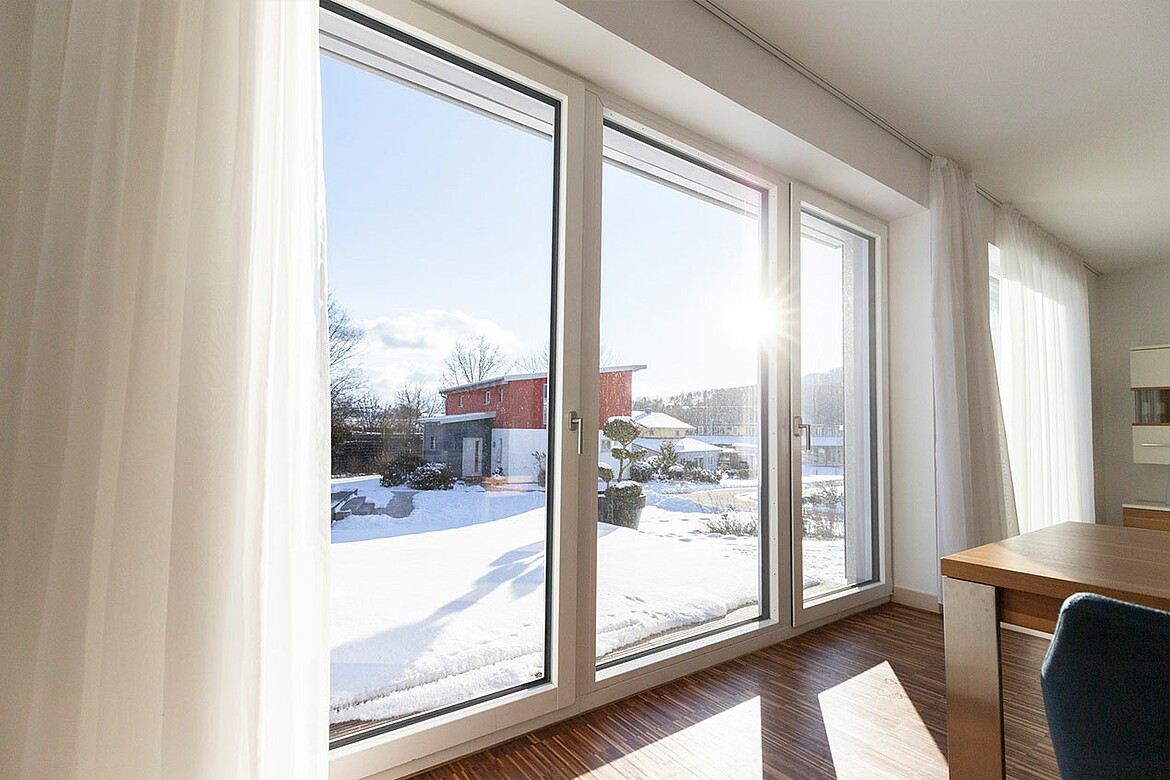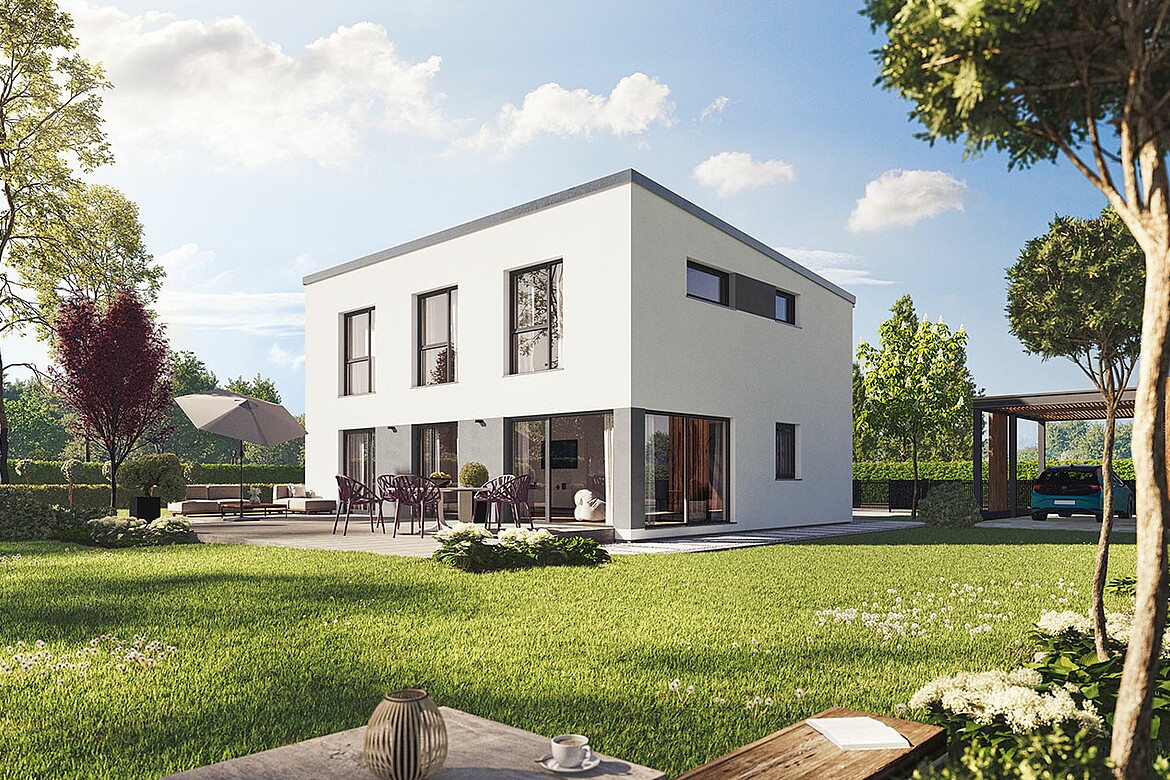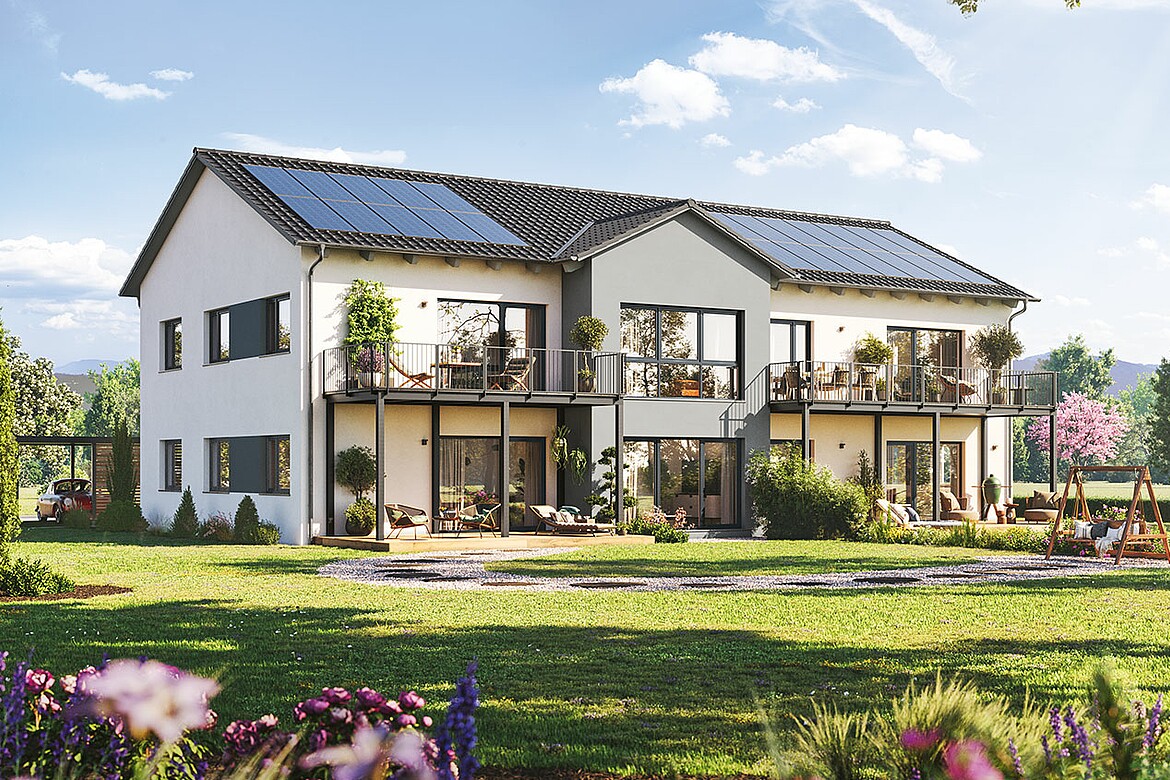The energy-efficient house: Save energy & money
Energy efficiency and sustainability are important issues when building a house. We at Hanse Haus therefore also attach great importance to this. Would you like to build in an environmentally friendly, sustainable and subsidisable way? Perhaps you would also like to be as independent as possible from public electricity suppliers? Our Hanse Haus experts will be happy to advise you! We have planned various energy-optimised house concepts for you for our prefabricated houses.
- Over 37,000 satisfied Hanse Haus homeowners
- Fairest prefabricated house provider for the 11th time in a row
- Excellent price-performance ratio

Save energy with Hanse Haus
KfW efficiency houses
There are various types of energy-efficient houses - but they all have one thing in common: they are generally particularly well thermally insulated and airtight, consume very little energy, save heating costs, protect the environment and also ensure a high level of living comfort.
A prefabricated house from Hanse Haus fulfils the requirements of an energy-efficient house, among other things due to the high-quality wall construction - and this is already standard.
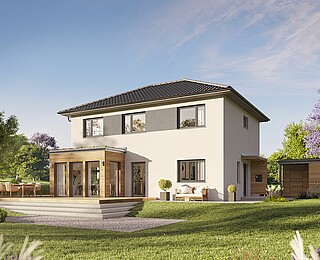
Energy-efficiency house 40 – highest efficiency level
KfW has defined different efficiency house levels to categorise the energy efficiency of a building. They indicate how high the total energy requirement of a house is (primary energy requirement) and how well the building envelope is insulated (transmission heat loss). The lower the figure, the less energy the house consumes.
The key figure 40 indicates that the efficiency house only consumes 40 percent of the primary energy that a reference building (built in accordance with the Building Energy Act) would require. The transmission heat loss in an Efficiency House 40 is only 55 percent of what would be the case in the reference building.
If you build a prefabricated house with Hanse Haus that achieves efficiency house level 40 and fulfils further requirements in terms of sustainability, you can take advantage of the KfW subsidy for climate-friendly new builds (KFN).
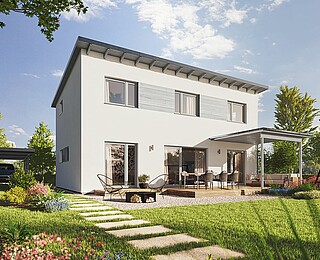
Energy-efficiency house 55 – high energy standard
The KfW Efficiency House is also characterised by particularly low energy consumption compared to the legal standard.
An Efficiency House 55 consumes only 55 per cent of the primary energy required by a reference building that meets the requirements of the Building Energy Act. The transmission heat loss, i.e. the heat loss via the building envelope, is only 70 per cent of what would be the case for the reference building in this efficiency house level - the structural thermal insulation therefore prevents 30 percent loss.
The prefabricated houses from Hanse Haus are realised in such a way that they at least meet the requirements of KfW Efficiency House Level 55.
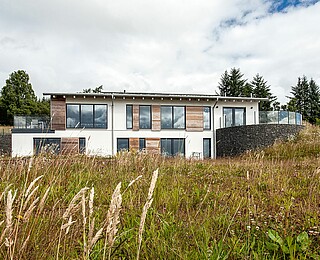
Save on house construction with subsidies
As a sub-programme of the Federal Promotion for Efficient Buildings (BEG), the KfW new construction promotion "Climate-friendly new build" (KFN) will start on 1 March 2023.
The prerequisite for the highest funding level KFWG-Q (up to €150,000 loan per residential unit) is the Quality Seal for Sustainable Buildings (QNG).
Your advantage with Hanse Haus: We can guarantee that your prefabricated house will receive QNG certification if certain planning requirements are met. And even if your dream home deviates from these specifications, you can apply for individual QNG certification for most homes.
What requirements must an efficiency house fulfil?
Requirements
Today, almost every new build is constructed using energy-efficient methods – and Hanse Haus is no exception. Various approaches and energy-saving measures are used to optimise the energy balance and protect the environment.
Requirements at a glance
Thermal insulation of the façade and roof as well as thermal insulation windows play a major role in the construction of an energy-efficient house. This is because the better the house is insulated, the less energy is used for heating. At Hanse Haus, we are ideally positioned when it comes to energy efficiency with our ThermoEfficiency wall, our specially developed, outstandingly thermally insulated windows and doors and our thermal insulation in the roof structure. This means that we already fulfil the strict KfW 40 criteria as standard.

To maximise thermal insulation, thermal insulation glazing should be used in the windows of a low-energy house. The orientation and size of the windows also have an influence on the efficiency of a house. Example: Windows facing south enable the use of solar energy, i.e. passive heating.

Low-energy houses are generally planned and built in a compact form. This means without thermal bridges and weak points caused by protruding building elements such as projections, bay windows or balconies, which favour heat loss.

The right heating system also saves energy. Low-energy houses therefore have particularly sustainable heating systems - often including a ventilation system with heat recovery. Solar systems for hot water and photovoltaic systems for generating electricity are also used in efficiency homes.

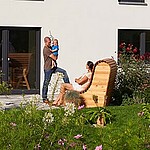
The sustainability of the Hammer family's Hanse Haus was assessed for a study by the Ministry of the Environment – and received top marks.
„Our house received particularly good ratings in the categories of healthy living, sustainability, environmental compatibility and quality of construction. These are all issues that we as builders did not actively concern ourselves with, but which Hanse Haus already fulfils excellently as standard.“
Important information about our energy-efficient houses
An energy-efficiency house is a building whose energy consumption and heat loss are significantly lower than would be permitted under the German Energy Saving Ordinance (EnEV).
The KfW efficiency house levels are used to categorise the energy efficiency of a building. The total energy requirement of the building (primary energy requirement) and the heat loss via the building envelope (transmission heat loss) are taken into account. The key figure for the efficiency house level indicates how energy-efficient a building is compared to a reference building that fulfils the requirements of the Building Energy Act. The lower the figure, the lower the energy consumption.
In addition to KfW efficiency houses, there are various other types of low-energy houses, such as passive houses or energy-plus houses. These building concepts all have one thing in common: they are generally particularly well thermally insulated and airtight, consume very little energy, save heating costs, protect the environment and ensure a high level of living comfort.
Your advantage with Hanse Haus: Our prefabricated houses fulfil all the requirements of an energy-efficient house thanks to our high-quality wall construction - and that as standard.
Energy-efficient houses have a number of advantages:
- Conservation of resources and the environment
- Low energy consumption and therefore lower heating costs thanks to better energy efficiency
- Partly autonomous energy supply
- high living comfort
- Better indoor climate
- Funding from the KfW Bank
- Independence from energy price fluctuations
- better price on sale
More complex insulation, multi-glazed windows and the installation of efficient heating technology - all of this means additional costs. The more emphasis is placed on energy efficiency and sustainability, the more cost-intensive building a house becomes.
Roughly speaking, an energy-efficient house costs 5 to 15 per cent more than a "conventional" detached house. Of course, the costs can vary greatly depending on the materials used and other factors.
However, you should not be put off by the initially higher costs: The additional costs can be quickly amortised over the years through the energy savings.
Even with environmentally friendly homes such as energy-efficient homes, there are a few points that you should consider before deciding in favour of them:
- Higher purchase costs
- Maintenance and servicing can be associated with higher costs
- More complex, cost-intensive building and heating technology
- Room ventilation is often necessary (as the windows are usually kept closed to save energy, this counteracts moisture build-up and mould formation)
A passive house is a building that, due to its good thermal insulation and other requirements, generally does not require conventional building heating. The houses are called "passive" because the majority of the heat requirement is covered by "passive" sources such as solar radiation and waste heat from people and technical appliances.
In our show house park in Oberleichtersbach, you can view such a passive house: the Variant 192 prefabricated house, which has been officially certified by the Passive House Institute in Darmstadt and covers its heating energy requirements almost entirely from solar radiation. Thanks to the extremely high level of thermal insulation, virtually no heat is lost through the walls, roof or windows and doors.
Detailed information on the passive house
With the PlusEnergyHouse, you go one step further: you generate more electricity than you need yourself.
A photovoltaic system converts sunlight into electricity which, when not in use, is channelled into a storage unit via an intelligent home control system. Surplus electricity is then fed into the public grid.
Visit us in our Hanse Haus show home in Wuppertal and experience live how a PlusEnergy house works in practice. Our Variant 35-235 house design served as the basis for this energy-efficient house with KfW 40 Plus standard.
The Kfw efficiency house levels 40 and 55 are particularly relevant for new builds. Our prefabricated houses from Hanse Haus also fulfil the requirements of these levels.
However, as the KfW also promotes the refurbishment of existing buildings, additional efficiency house levels have been defined which are subject to less stringent criteria in terms of energy consumption and heat loss.
The KfW Efficiency House 70 consumes 30 per cent less primary energy per year than a reference house according to the current Building Energy Act.
When planning a new build, you will primarily encounter the Kfw efficiency house levels 40 and 55. Our Hanse houses also fulfil the requirements of these levels.
However, since the KfW also offers subsidies for the refurbishment of existing buildings, additional efficiency house levels have been defined to categorise the energy efficiency of these refurbished buildings.
The KfW Efficiency House 85 consumes 15 per cent less primary energy per year than a reference house according to the current Building Energy Act.
